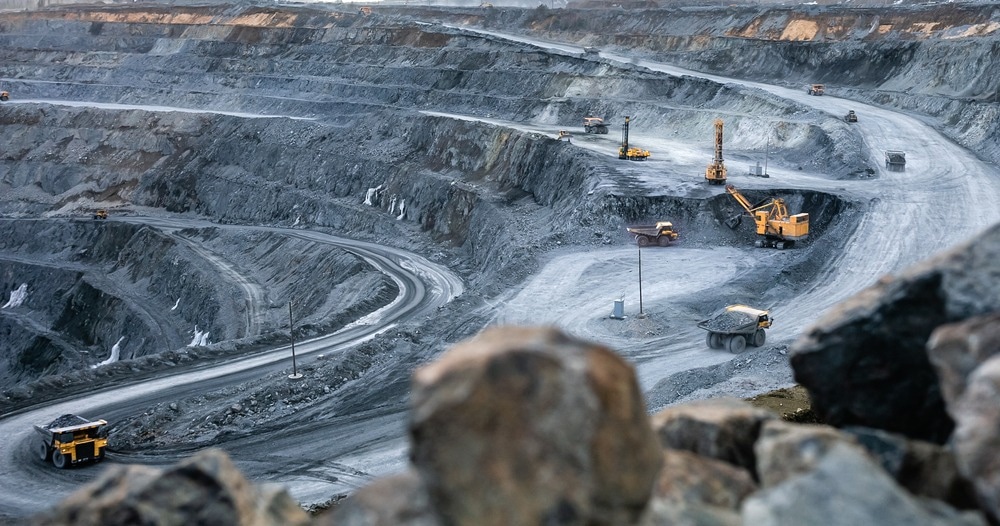As the mining industry faces increased Environmental, Social, and Governance (ESG) demands, among other challenges, sophisticated digitized solutions are becoming a critical element in addressing energy requirements, resource management, and environmental-based challenges, while also improving the productivity of the mine and the safety of workers. As a result, a transition to intelligent mining approaches has become essential.

Image Credit: Evgeny_V/Shutterstock.com
Why Use Intelligent Systems in Mining?
The requirements for natural resources are growing in tandem with global meteoric economic development. Yet the extraction of these natural resources has many drawbacks.
To counteract the drawbacks of conventional mining techniques, such as low production efficacy, production costs, and extreme pollution, intelligent mining methods that provide high levels of safety, protection to the environment, and high efficiency are required.
Intelligent systems integrate advanced technologies, processes, and the people working in the industry to create feedback loops that can help inform decision-making.
Usage of Sensors in Mining and Exploration
Modern advanced intelligent systems in the mining sector use sensor-based setups to improve safety and efficacy while also optimizing the mine's productivity. In actuality, sensors are being utilized at every stage in the mining process, from exploration and surveying to the extraction, processing, and sorting of the mineral ore.
Sensors and other detection equipment are also being used by operators to track the state of infrastructure, environment, and hardware to reduce excessive downtime and avoid operational hazards. This makes sensor-based systems indispensable in the mining sector.
What Types of Sensors Are Used in Mining Operations?
In the mining sector, detection and tracking solutions incorporating sensors span a wide range of applications Examples include pressure and oxygen sensors to keep track of pressure and airflow within mine shafts, smoke and gas detectors to detect any fire or gas leakage, and vibrating wire-based sensors to track the stability of the mine.
Magnetic susceptibility sensors and spectrometers are used to track wear in the equipment. Radar-based sensors are being employed for mass solid mineral processing, and specialized sensors are being used to measure the concentration of minerals at various phases of ore processing.
Influence of Sensors on Mining Digitization
Digital innovation in the mining sector is growing at a rapid pace. Miners all over the globe have decided to embrace digitization, having realized that its applications offer a plethora of possibilities to influence cost reductions and increase overall productivity.
For years, miners have used sensor-based technology in almost every operation, but certain applications for which technology is being used are ground-breaking. Many organizations are now configuring and installing 'Digital Twinning' in mines.
The concept of 'Digital Twinning' is based on a digital model generated through the help of sensor data. This digital model simulates the actual Mine operations, allowing its operators to evaluate the condition of equipment ranging from large dump trucks to even the smallest of valves.
Another element of mining operations that is continuing to improve due to sensor-based digitization is the maintenance process.
Since more and more highly accurate digital sensors are being utilized in mining operations, data from those sensors can help to reduce the need for prescriptive maintenance, due to the ability of remote data analysis of wireless sensors. In addition, with the exponential growth in sensor data, managers aim to employ predictive maintenance of mining equipment.
Advantages of Using Sensors
Sensors are primarily being used in the mining sector to enhance the safety of the worker. Despite the availability of advanced safety equipment, as well as the employment of the best safety procedures, there is still the possibility of an accident while working underground. The sensors being used can detect hazardous situations and can help in avoiding an accident.
Sensors can also significantly reduce the cost of mining operations. With sensors able to take on many tasks previously performed by a human, saving money is inherent. In addition, sensors with predictive capabilities can further help reduce costs.
Sensors with predictive capabilities will be capable of recognizing malfunctions, and other issues before they become major issues. This will essentially result in lower downtime and thus lower costs.
Considering the fact that modern sensors can collect and communicate data rapidly and accurately, it is inevitable that the required time to complete a task will be less when compared to a human. Thus, sensors are providing the added benefit of process time reduction.
These traits make sensors invaluable in ensuring worker safety, reducing costs, and saving time not only for an operational Mine but also when setting up a new mining operation.
Commercial Examples of Intelligent Mining Systems
Probe IMT is an innovative company that offers a wide range of sensor-based products which greatly enhance both the safety and productivity within the mining setup.
Probe IMT implements and maintains sensor-based intelligent systems to generate data for IT systems to aid decision-making. Wabtec's collision avoidance systems (CAS) are among the company's many sensor-based offerings.
The Wabtec CAS system by Probe IMT provides an advanced and versatile system that offers a 360-degree awareness of entities close to a vehicle during various stages of operations (stationary, slow-speed, high-speed), thereby lowering the risk of vehicle-to-vehicle, vehicle-to-personnel, and vehicle-to-infrastructure accidents.
References and Further Reading
Moore, P. (2022). Probe IMT emphasising sensor-based intelligent mining at Electra including Wabtec CAS. International Mining. Available at: https://im-mining.com/2022/09/07/probe-imt-emphasising-sensor-based-digital-mining-at-electra-including-wabtec-cas
Goodbody, A. (2019). Intelligent exploration. Mining Magazine. Available at: https://www.miningmagazine.com/exploration/news/1372109/intelligent-exploration
Khawaja, S. (2022). Digitalization and its impact on the mining industry. Mining Technology. Available at: https://www.mining-technology.com/sponsored/digitalisation-and-its-impact-on-the-mining-industry
Li, J., et al. (2018). Intelligent Mining Technology for an Underground Metal Mine Based on Unmanned Equipment. Engineering. https://doi.org/10.1016/j.eng.2018.05.013.
Disclaimer: The views expressed here are those of the author expressed in their private capacity and do not necessarily represent the views of AZoM.com Limited T/A AZoNetwork the owner and operator of this website. This disclaimer forms part of the Terms and conditions of use of this website.